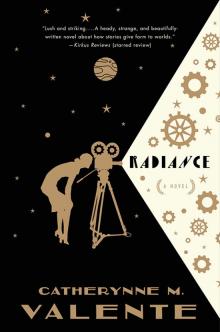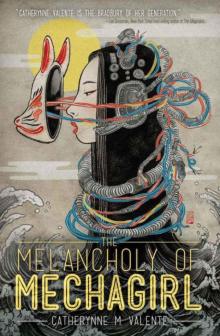


How Democracies Die
Steven Levitsky
The erosion of basic norms expanded the zone of acceptable political action. Several years before shots were fired at Fort Sumter, partisan violence pervaded Congress. Yale historian Joanne Freeman estimates that there were 125 incidents of violence—including stabbings, canings, and the pulling of pistols—on the floor of the U.S. House and Senate between 1830 and 1860. Before long, Americans would be killing each other in the hundreds of thousands.
The Civil War broke America’s democracy. One-third of American states did not participate in the 1864 election; twenty-two of fifty Senate seats and more than a quarter of House seats were left vacant. President Lincoln famously suspended habeas corpus and issued constitutionally dubious executive orders, though, of course, one notable executive order freed the slaves. And following the Union victory, much of the former Confederacy was placed under military rule.
The trauma of the Civil War left Americans with searing questions about what went wrong. The sheer destruction—including more than 600,000 dead—shattered many northern intellectuals’ belief in the superiority of their form of democracy. Was the U.S. Constitution not the providentially inspired document it had been thought to be? This wave of self-examination gave rise to a new interest in unwritten rules. In 1885, the then–political science professor Woodrow Wilson, the son of a southern Confederate family, published a book about Congress that explored the disparity between the promise of constitutional arrangements and the way institutions really worked. In addition to good laws, America needed effective norms.
Rebuilding democratic norms after a civil war is never easy, and America was no exception. The wounds of war healed slowly; Democrats and Republicans only grudgingly accepted one another as legitimate rivals. At an 1876 campaign event for Republican candidate Rutherford B. Hayes, politician Robert Ingersoll spoke out against Democrats in ghastly terms:
Every man that tried to destroy this nation was a Democrat. Every enemy this great Republic has had for twenty years has been a Democrat….Every man that denied to the Union prisoners even the worm-eaten crust of famine, and when some poor, emaciated Union patriot, driven to insanity by famine, saw in an insane dream the face of his mother, and she beckoned him and he followed, hoping to press her lips once again against his fevered face, and when he stepped one step beyond the dead line, the wretch that put the bullet through his loving, throbbing heart was—and is—a Democrat.
This kind of rhetoric, known as “waving the bloody shirt,” persisted for years.
With enduring partisan animosity came constitutional hardball. In 1866, the Republican Congress reduced the size of the Supreme Court from ten to seven to prevent President Andrew Johnson, a Democrat whom Republicans viewed as subverting Reconstruction, from making any appointments, and a year later, it passed the Tenure of Office Act, which prohibited Johnson from removing Lincoln’s cabinet members without Senate approval. Viewing the law as a violation of his constitutional authority, Johnson ignored it—a “high misdemeanor” for which he was impeached in 1868.
Gradually, though, as the Civil War generation passed from the scene, Democrats and Republicans learned to live with one another. They heeded the words of former House Speaker James Blaine, who in 1880 advised fellow Republicans to “fold up the bloody shirt” and shift the debate to economic issues.
It was not just time, however, that healed partisan wounds. Mutual toleration was established only after the issue of racial equality was removed from the political agenda. Two events were critical in this regard. The first was the infamous Compromise of 1877, which ended the 1876 presidential election dispute and elevated Republican Rutherford B. Hayes to the presidency in exchange for a promise to remove federal troops from the South. The pact effectively ended Reconstruction, which, by stripping away hard-fought federal protections for African Americans, allowed southern Democrats to undo basic democratic rights and consolidate single-party rule. The second event was the failure of Henry Cabot Lodge’s 1890 Federal Elections Bill, which would have allowed federal oversight of congressional elections to ensure the realization of black suffrage. The bill’s failure ended federal efforts to protect African American voting rights in the South, thereby ensuring their demise.
It is difficult to overstate the tragic significance of these events. Because civil and voting rights were regarded by many southern Democrats as a fundamental threat, the parties’ agreement to abandon those issues provided a basis for restoring mutual toleration. The disenfranchisement of African Americans preserved white supremacy and Democratic Party dominance in the South, which helped maintain the Democrats’ national viability. With racial equality off the agenda, southern Democrats’ fears subsided. Only then did partisan hostility begin to soften. Paradoxically, then, the norms that would later serve as a foundation for American democracy emerged out of a profoundly undemocratic arrangement: racial exclusion and the consolidation of single-party rule in the South.
After Democrats and Republicans accepted each other as legitimate rivals, polarization gradually declined, giving rise to the kind of politics that would characterize American democracy for the decades that followed. Bipartisan cooperation enabled a series of important reforms, including the Sixteenth Amendment (1913), which permitted the federal income tax, the Seventeenth Amendment (1913), which established the direct election of U.S. senators, and the Nineteenth Amendment (1919), which granted women the right to vote.
Mutual toleration, in turn, encouraged forbearance. By the late nineteenth century, informal conventions or work-arounds had already begun to permeate all branches of government, enabling our system of checks and balances to function reasonably well. The importance of these norms was not lost on outside observers. In his two-volume masterpiece, The American Commonwealth (1888), British scholar James Bryce wrote that it was not the U.S. Constitution itself that made the American political system work but rather what he called “usages”: our unwritten rules.
—
By the turn of the twentieth century, then, norms of mutual toleration and institutional forbearance were well-established. Indeed, they became the foundation of our much-admired system of checks and balances. For our constitutional system to function as we expect it to, the executive branch, Congress, and the judiciary must strike a delicate balance. On the one hand, Congress and the courts must oversee and, when necessary, check the power of the president. They must be democracy’s watchdogs. On the other, Congress and the courts must allow the government to operate. This is where forbearance comes in. For a presidential democracy to succeed, institutions that are muscular enough to check the president must routinely underuse that power.
In the absence of these norms, this balance becomes harder to sustain. When partisan hatred trumps politicians’ commitment to the spirit of the Constitution, a system of checks and balances risks being subverted in two ways. Under divided government, where legislative or judicial institutions are in the hands of the opposition, the risk is constitutional hardball, in which the opposition deploys its institutional prerogatives as far as it can extend them—defunding the government, blocking all presidential judicial appointments, and perhaps even voting to remove the president. In this scenario, legislative and judicial watchdogs become partisan attack dogs.
Under unified government, where legislative and judicial institutions are in the hands of the president’s party, the risk is not confrontation but abdication. If partisan animosity prevails over mutual toleration, those in control of congress may prioritize defense of the president over the performance of their constitutional duties. In an effort to stave off opposition victory, they may abandon their oversight role, enabling the president to get away with abusive, illegal, and even authoritarian acts. Such a transformation from watchdog into lapdog—think of Perón’s acquiescent congress in Argentina or the chavista supreme court in Venezuela—can be an important enabler of authoritarian rule.
The American system of checks and balances, therefore, requires that public officials use their institution
al prerogatives judiciously. U.S. presidents, congressional leaders, and Supreme Court justices enjoy a range of powers that, if deployed without restraint, could undermine the system. Consider six of these powers. Three are available to the president: executive orders, the presidential pardon, and court packing. Another three lie with the Congress: the filibuster, the Senate’s power of advice and consent, and impeachment. Whether these prerogatives are formally stipulated in the Constitution or merely permitted under the Constitution, their weaponization could easily result in deadlock, dysfunction, and even democratic breakdown. For most of the twentieth century, however, American politicians used them all with remarkable forbearance.
—
We begin with presidential power. The American presidency is a potent—and potentially dominant—institution, due, in part, to gaps in the Constitution. Article II of the Constitution, which lays out the formal powers of the presidency, does not clearly define its limits. It is virtually silent on the president’s authority to act unilaterally, via executive orders or decrees. Presidential power has, moreover, swelled over the last century. Driven by the imperatives of war and depression, the executive branch has built up vast legal, administrative, budgetary, intelligence, and war-making capacities, transforming itself into what historian Arthur M. Schlesinger Jr. famously called the “Imperial Presidency.” Postwar American presidents controlled the largest military force in the world. And the challenges of governing a global superpower and complex industrial economy and society generated ever-growing demands for more concentrated executive action. By the early twenty-first century, administrative resources at the executive’s disposal were so vast that legal scholar Bruce Ackerman described the presidency as a “constitutional battering ram.”
The immense powers of the executive branch create a temptation for presidents to rule unilaterally—at the margins of Congress and the judiciary. Presidents who find their agenda stalled can circumvent the legislature by issuing executive orders, proclamations, directives, executive agreements, or presidential memoranda, which can assume the weight of law without the endorsement of Congress. The Constitution does not prohibit such action.
Likewise, presidents can circumvent the judiciary, either by refusing to abide by court rulings, as Lincoln did when the Supreme Court rejected his suspension of the writ of habeas corpus, or by using the prerogative of the presidential pardon. Alexander Hamilton argued in Federalist 74 that because the power of pardon was so far-reaching, it would “naturally inspire scrupulousness and caution.” But in the hands of a president without scruples or caution, the pardon can be used to thoroughly shield the government from judicial checks. The president can even pardon himself. Such action, though constitutional, would undermine the independence of the judiciary.
Given the vast potential for unilateral action, nearly all of which is either prescribed or permitted by the Constitution, the importance of executive forbearance is hard to overstate. George Washington was an important precedent-setting figure in this regard. Washington knew his presidency would help establish the future scope of executive authority; as he put it, “I walk on untrodden ground. There is scarcely any part of my conduct which may not hereafter be drawn into precedent.” As the occupant of an office many feared would become a new form of monarchy, Washington worked hard to establish norms and practices that would complement—and strengthen—constitutional rules. He energetically defended his designated areas of authority but was careful not to encroach on areas within the domain of Congress. He limited his use of the veto to bills he regarded as constitutionally dubious, issuing only two vetoes in eight years and writing that he “signed many bills with which my Judgement is at variance,” out of “motives of respect to the legislature.” Washington was also reluctant to issue decrees that could be seen as encroaching on congressional jurisdiction. In eight years, he issued only eight executive orders.
Throughout his life, Washington had learned that he “gained power from his readiness to give it up.” Thanks to his enormous prestige, this forbearance infused many of the American republic’s other nascent political institutions. As historian Gordon Wood put it, “If any single person was responsible for establishing the young Republic on a firm footing, it was Washington.”
Norms of presidential restraint took hold. Although occasionally tested, especially during wartime, they were robust enough to constrain even our most ambitious presidents. Consider Theodore Roosevelt, who ascended to the office in 1901 after President William McKinley’s assassination. Roosevelt subscribed to what he called the stewardship theory of the presidency, which asserted that all executive actions were allowed unless expressly prohibited by law. This expansive view of presidential power, Roosevelt’s fondness for populist-style appeals to “the people,” and his “boundless energy and ambition” alarmed contemporary observers, including leaders of his own Republican Party. President McKinley’s powerful advisor, Mark Hanna, had warned against selecting Roosevelt as his vice president, reportedly saying, “Don’t you realize that there’s only one life between that madman and the White House?” As president, however, Roosevelt acted with surprising restraint. He took great care, for example, to avoid appearing to bully Congress by speaking directly to the people or attacking individual members of Congress as they debated crucial votes. In the end, Roosevelt operated well within the bounds of our constitutional checks and balances.
Even as the executive’s legal, administrative, military, and intelligence capabilities soared during the twentieth century, presidents abided by established norms of self-limitation in their interactions with Congress and the courts. Outside of wartime, they were judicious in their use of executive orders. They never used pardons for self-protection or narrow political gain, and most sought the advice of the Justice Department before issuing them. And, crucially, twentieth-century presidents rarely defied other branches of government, as Lincoln and Andrew Johnson had done during the nineteenth century. President Harry Truman complied with the Supreme Court’s blocking of his 1952 executive order to nationalize the steel industry in the face of a strike that he viewed as a national emergency. Eisenhower enforced the Supreme Court’s Brown v. Board of Education decision despite his own displeasure with it. Even Nixon acceded to congressional demands that he turn over his secret tapes after the Supreme Court ruled in Congress’s favor.
So although the office of the American presidency strengthened during the twentieth century, American presidents demonstrated considerable restraint in their exercise of that power. Even in the absence of constitutional barriers, unilateral executive action remained largely a wartime exception, rather than the rule.
A similar story can be told about presidential court packing. Court packing may take one of two forms: impeaching unfriendly Supreme Court justices and replacing them with partisan allies, or altering the size of the Court and filling the new seats with loyalists. Both of these maneuvers are, strictly speaking, legal; the Constitution permits impeachment and does not specify the size of the Supreme Court. Presidents may purge and pack the Court without violating the letter of the law. They have not done so, however, for well over a century.
The only instance of Supreme Court impeachment in American history occurred in 1804, when the Republican-dominated House of Representatives voted to impeach Justice Samuel Chase, an “ardent Federalist” who had campaigned against Jefferson and criticized him during his presidency. Viewing Chase’s behavior as sedition, Jefferson pushed for his impeachment. Although Republicans tried to wrap the move in legality, the impeachment was, by all accounts, a “political persecution from beginning to end.” The Senate acquitted Chase, setting a powerful precedent against impeachment.
The Supreme Court’s size was a more frequent target of partisan machinations during America’s first century. Beginning with the Federalists’ move to shrink the Court to deny President-elect Jefferson an appointment, the U.S. Supreme Court changed size seven times between 1800 and 1869—each time for political reas
ons. By the late nineteenth century, however, court packing was widely viewed as unacceptable. In an 1893 book on the American political system, future president Woodrow Wilson wrote that “such outrages” were “a violation of the spirit of the Constitution.” Former President Benjamin Harrison wrote around the same time that although expanding the Court “is very tempting to partisans,” it would be “destructive, fatally so to our constitutional union.” By the 1920s, British journalist H. W. Horwill concluded that there existed an informal norm “strong enough to prohibit the most powerful President and Congress, whatever the provocation, from taking a course which would make the Supreme Court the plaything of party politics.”
President Franklin Roosevelt, of course, violated this particular norm with his 1937 court-packing effort. As constitutional scholars Lee Epstein and Jeffrey Segal wrote, Roosevelt’s norm-violating proposal was “extraordinary in its hubris.” Equally extraordinary, however, was the resistance it generated. At the time, Roosevelt was extremely popular—he had just been reelected in a historic landslide, and his Democratic allies enjoyed solid majorities in both houses of Congress. Few American presidents have ever enjoyed such political strength. Yet court packing triggered across-the-board opposition. Media criticism was fierce—the San Francisco Chronicle described the plan as an “open declaration of war on the Supreme Court.” And congressional opposition was immediate, not only from Republicans but also from many Democrats. Missouri senator James A. Reed called Roosevelt’s proposal “a step toward making himself dictator in fact.” Edward Cox, a Democratic congressman from Georgia, warned that it would “change the meaning of our basic laws and our whole system of government” and thus represented “the most terrible threat to constitutional government that has ever arisen in the entire history of the country.” Even loyal New Dealers turned against Roosevelt. Wyoming senator Joseph O’Mahoney was such a close ally that he had been seated next to Eleanor Roosevelt at a pre-inaugural dinner at the White House only two weeks earlier. Yet O’Mahoney opposed the Court plan, writing to a friend, “The whole mess smells of Machiavelli and Machiavelli stinks!”














